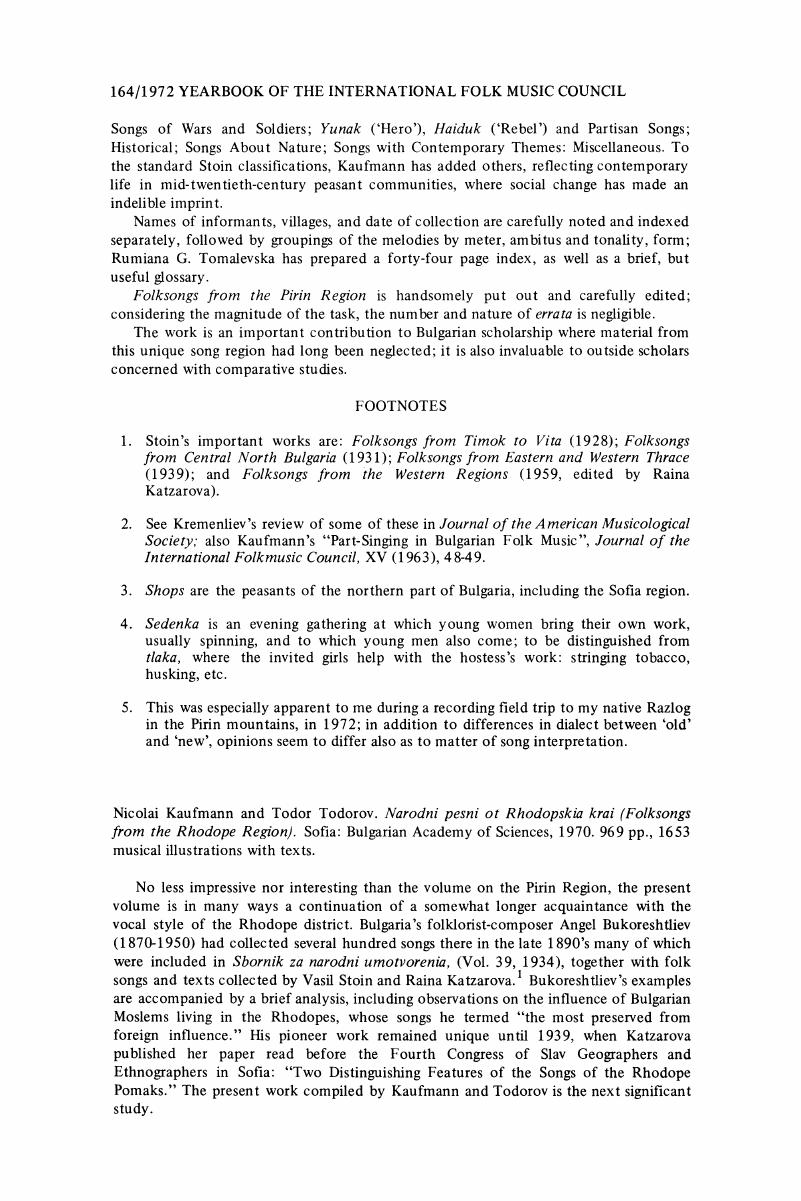No CrossRef data available.
Article contents
Nicolai Kaufmann and Todor Todorov. Narodni pesni ot Rhodopskia krai (Folksongs from the Rhodope Region). Sofia: Bulgarian Academy of Sciences, 1970. 969 pp., 1653 musical illustrations with texts.
Published online by Cambridge University Press: 14 February 2019
Abstract

- Type
- Reviews
- Information
- Copyright
- Copyright © 1973 By the International Folk Music Council
References
Footnotes
1. Bukoreshtliev supports his argument about the purity of Rhodope Mohammedan music with the fact that the mountains remained far off from “the path travelled and battles fought by many nations.”Google Scholar
2. Pripevki songs deal with well-known young people in the community. In the songs, their names are inserted to fit the occasion; the theme is usually of light, amorous nature.Google Scholar
3. Kaufmann and Todorov: Folksongs from the Pirin Region p. 253, No. 436; sung by Muda Eneva of Levochevo, near Smolen; recorded by Kaufmann, Feb. 1955. The previous example in the collection, taken from a different locale, tells of only one traveller who arrives on horseback, asking for water without dismounting. In both versions, the water seems to be for sale – “a cup for gold”. The version given in this review was sung by a seventy-four year old woman, while the one before it (Ex. 434 in the book), by a thirty-nine year old man with a Mohammedan first name. Judging from the fact that five different melodies of basically the same text are included by the authors, it would seem that the story is quite popular throughout the Rhodope region.Google Scholar




